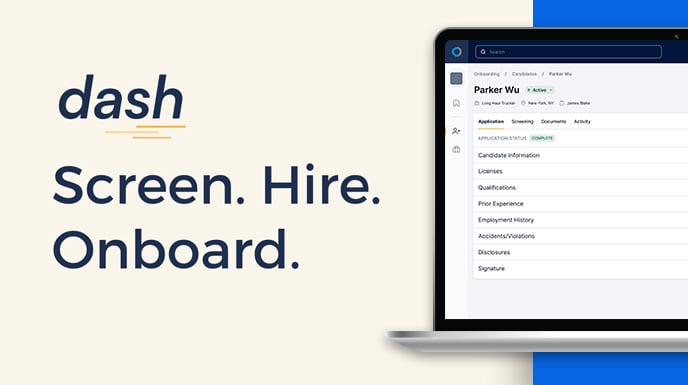ELD Requirements for Intrastate CMV Drivers Are Inevitable – and Coming Soon

MAY 16, 2017 – With all the buzz about the upcoming mandate, you’re likely aware that the ELD compliance deadline is coming this December. After that date, most commercial truck drivers who cross state lines will be required to have an electronic logging device installed and in use to record their hours of service. Drivers not complying with these regulations can face fines as high as $11,000 per incident, as well as penalties such as temporary or permanent shutdown orders.
These ELD rules only apply to interstate drivers, so if you’re a CMV driver who only does business in your own state that means you’re off the hook, right? Well, not so fast. It looks like it will soon be mandatory for intrastate drivers to use ELDs as well. That’s because the U.S. Department of Transportation’s ELD mandate requires each state to create their own ELD rules for intrastate drivers that are compatible with national laws.
Related: How to Comply with the ELD Mandate
Which States Are Already On Board?
Last month, Texas became the first state to issue an ELD requirement when it announced that CMV drivers within its borders would be expected to have the devices in use by Dec. 19, 2019. Texas intrastate motor carriers are expected to have ELDs with the same specifications as the FMCSA compliant devices required for drivers crossing state lines. Trucks carrying agricultural products during harvest season who stay within a 150-air-mile radius are exempt from the ELD mandate.
It’s possible that Florida will be the next state to adopt this mandate. House Bill 545, which is currently circulating through the Florida State Legislature, would make the ELD mandate a reality for intrastate drivers in the state. If passed, intrastate motor carriers would be required to comply after December 31, 2018. Under the proposed mandate, CMVs carrying large amounts of hazardous materials through the state would be exempt.
Related: Are You Required to Have an ELD?
So, What’s Next?
Experts expect that most if not all states will adopt similar regulations at some point in the near future, though it’s hard to say when at this point. Some authorities have predicted that larger states, such as California and Alaska, may be more resistant to ELD compliance. Due to their larger geographical area, these states have more intrastate drivers. They also have more relaxed regulations when it comes to hours of service – drivers in those states are able to stay on the road for 12 hours at a time.
While it may take a couple of years for your state’s regulations to be put in place, it doesn’t hurt to start planning for ELDs now. Wondering where to get started? At Foley, we’ve partnered with a leading ELD provider to give you both the powerful technology and compliance expertise you need to get started with the upcoming ELD mandate. To learn more about our unique and affordable solution, click here.
Related Articles
3 Reasons Paper DOT Driver Qualification Files Aren't Cutting It Anymore
How to Improve Productivity by 50% with DOT Compliance Automation
4 Steps to Maintaining Compliant Driver Qualification Files
.png)



